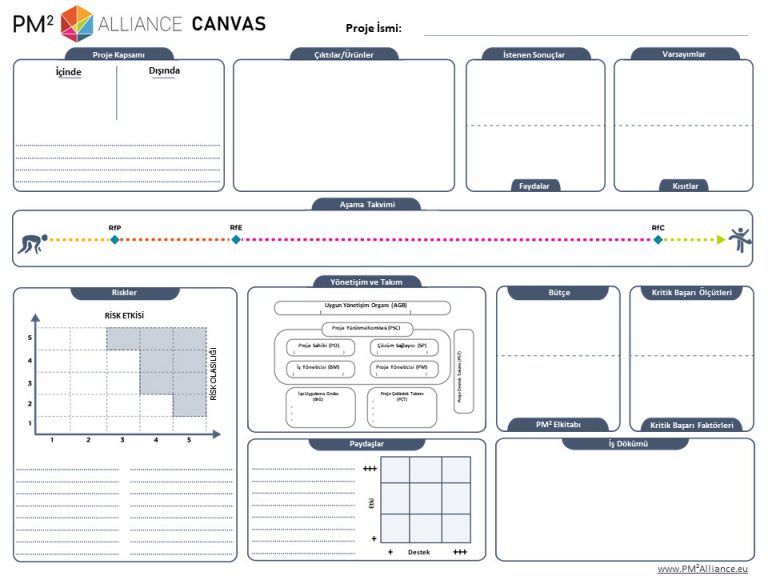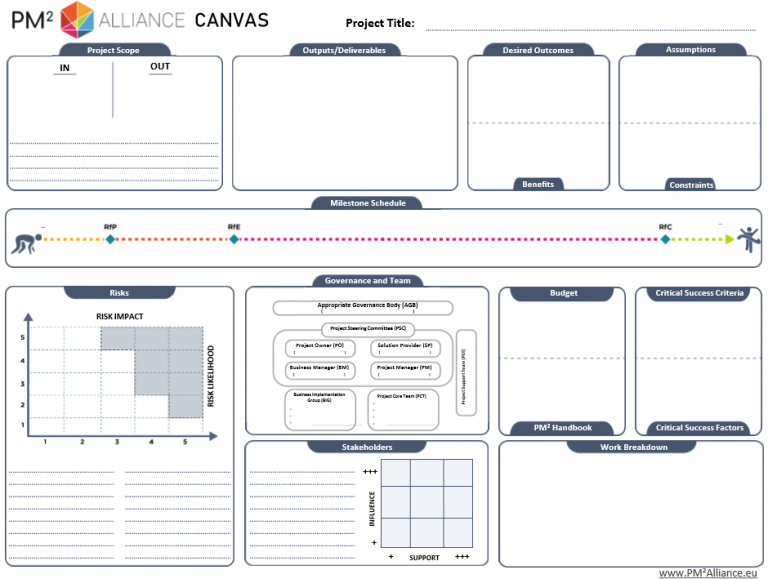
- Home
- For Individuals
Advance your career with a PM² Certification
- For Training Providers
Broaden your
training portfolio - For Companies
Involved in EU Projects?
- Contact
Advance your career with a PM² Certification
Broaden your
training portfolio
Involved in EU Projects?
Resources based on the PM² Methodology

The PM² Project Canvas is an easy-to-use tool that can help individuals or teams visualize the key elements of a project and capture them in one single page.
It has been optimised to be used in three different ways:
1. As a starting point for the project, i.e. early in the Initiating Phase.
2. As a way to summarise the results of the Initiating and Planning Phases.
3. As an excellent project management communication asset and can be used in PowerPoint presentations or as a handout during Steering Committee Project Team meetings.
Use this as a template document. This template is customisable. Download the Canvas in .pdf or .pptx file below.
Use this fillable form as a sample or template according to the PM² Methodology's Guide. The Canvas provides step by step instructions on how to use it and incorporate it in a project. Free, downloadable and easy to edit .pptx file.
© 2023. PM².EU - PM² Center. All Rights Reserved.